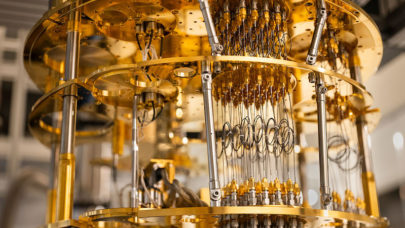


Empowering High-Performance Computing for Artificial Intelligence
Artificial intelligence (AI) presents some of the most challenging demands in information technology, especially concerning computing power and data movement. As a result of these challenges, hi …

Kathy Yelick on Post-Exascale Challenges
With the exascale era underway, the HPC community is already turning its attention to zettascale computing, the next of the 1,000-fold performance leaps that have occurred about once a decade. Wi …

HPCwire’s 2024 People to Watch
Find out which 12 HPC luminaries are being recognized this year for driving innovation within their particular fields.

MLCommons Launches New AI Safety Benchmark Initiative
April 16, 2024
MLCommons, organizer of the popular MLPerf benchmarking exercises (training and inference), is starting a new effort to benchmark AI Safety, one of the most pre Read more…

Exciting Updates From Stanford HAI’s Seventh Annual AI Index Report
April 15, 2024
As the AI revolution marches on, it is vital to continually reassess how this technology is reshaping our world. To that end, researchers at Stanford’s Instit Read more…

Crossing the Quantum Threshold: The Path to 10,000 Qubits
April 15, 2024
Editor’s Note: Why do qubit count and quality matter? What’s the difference between physical qubits and logical qubits? Quantum computer vendors toss these Read more…

Intel’s Vision Advantage: Chips Are Available Off-the-Shelf
April 11, 2024
The chip market is facing a crisis: chip development is now concentrated in the hands of the few. A confluence of events this week reminded us how few chips Read more…

The VC View: Quantonation’s Deep Dive into Funding Quantum Start-ups
April 11, 2024
Yesterday Quantonation — which promotes itself as a one-of-a-kind venture capital (VC) company specializing in quantum science and deep physics — announce Read more…

Nvidia’s GTC Is the New Intel IDF
April 9, 2024
After many years, Nvidia's GPU Technology Conference (GTC) was back in person and has become the conference for those who care about semiconductors and AI. I Read more…

Google Announces Homegrown ARM-based CPUs
April 9, 2024
Google sprang a surprise at the ongoing Google Next Cloud conference by introducing its own ARM-based CPU called Axion, which will be offered to customers in it Read more…

Computational Chemistry Needs To Be Sustainable, Too
April 8, 2024
A diverse group of computational chemists is encouraging the research community to embrace a sustainable software ecosystem. That's the message behind a recent Read more…

- Click Here for More Headlines

Whitepaper
Transforming Industrial and Automotive Manufacturing
In this era, expansion in digital infrastructure capacity is inevitable. Parallel to this, climate change consciousness is also rising, making sustainability a mandatory part of the organization’s functioning. As computing workloads such as AI and HPC continue to surge, so does the energy consumption, posing environmental woes. IT departments within organizations have a crucial role in combating this challenge. They can significantly drive sustainable practices by influencing newer technologies and process adoption that aid in mitigating the effects of climate change.
While buying more sustainable IT solutions is an option, partnering with IT solutions providers, such and Lenovo and Intel, who are committed to sustainability and aiding customers in executing sustainability strategies is likely to be more impactful.
Learn how Lenovo and Intel, through their partnership, are strongly positioned to address this need with their innovations driving energy efficiency and environmental stewardship.
Download Now
Sponsored by Lenovo
Whitepaper
How Direct Liquid Cooling Improves Data Center Energy Efficiency
Data centers are experiencing increasing power consumption, space constraints and cooling demands due to the unprecedented computing power required by today’s chips and servers. HVAC cooling systems consume approximately 40% of a data center’s electricity. These systems traditionally use air conditioning, air handling and fans to cool the data center facility and IT equipment, ultimately resulting in high energy consumption and high carbon emissions. Data centers are moving to direct liquid cooled (DLC) systems to improve cooling efficiency thus lowering their PUE, operating expenses (OPEX) and carbon footprint.
This paper describes how CoolIT Systems (CoolIT) meets the need for improved energy efficiency in data centers and includes case studies that show how CoolIT’s DLC solutions improve energy efficiency, increase rack density, lower OPEX, and enable sustainability programs. CoolIT is the global market and innovation leader in scalable DLC solutions for the world’s most demanding computing environments. CoolIT’s end-to-end solutions meet the rising demand in cooling and the rising demand for energy efficiency.
Download Now
Sponsored by CoolIT
Advanced Scale Career Development & Workforce Enhancement Center
Featured Advanced Scale Jobs:
HPCwire Resource Library
HPCwire Product Showcase
© 2024 HPCwire. All Rights Reserved. A Tabor Communications Publication
HPCwire is a registered trademark of Tabor Communications, Inc. Use of this site is governed by our Terms of Use and Privacy Policy.
Reproduction in whole or in part in any form or medium without express written permission of Tabor Communications, Inc. is prohibited.
































